Outdoor Air Quality
Air pollution, measured in PM (particulate matter) can cause serious health problems. Particulate matter is the term for a mixture of solid particles and liquid droplets found in the air. Some are large enough to been seen with the naked eye (dirt, dust, soot, smoke) and others are so small they can only be seen using an electron microscope.
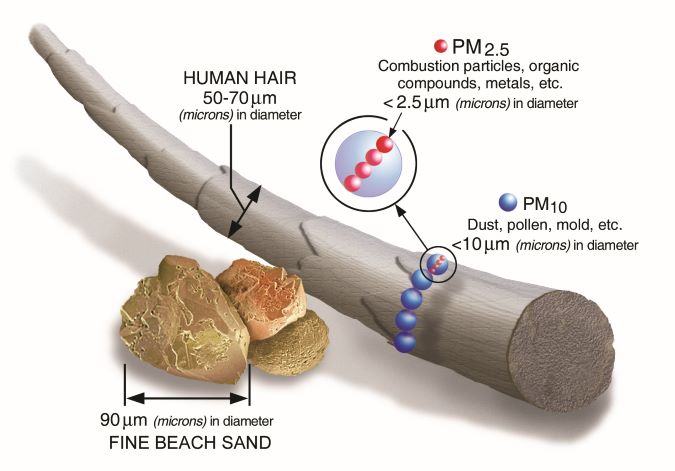
The particles that measure less than 10 micrometers in diameter can get deep into your lungs and may even get into your bloodstream. Of these, particles less than 2.5 micrometers in diameter (PM2.5) pose the greatest risk to health. Exposure to such particles can affect both your lungs and your heart and lead to health problems such as:
- Premature death in people with heart or lung disease
- Nonfatal heart attacks (silent heart attack with little to no symptoms involving a blockage of blood flow to the heart and possible damage to heart muscle)
- Irregular heartbeat
- Aggravated asthma
- Decreased lung function
- Increased respiratory symptoms (coughing, difficulty breathing, irritation of the airway)
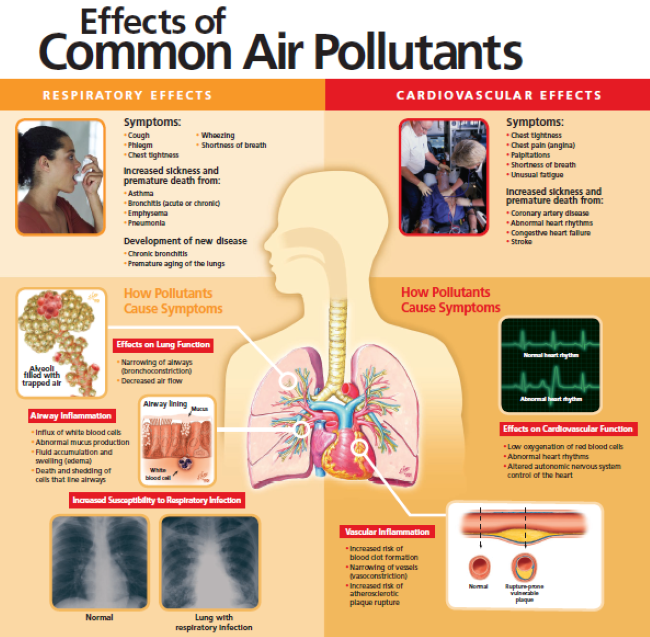
The best way to protect yourself and your family from elevated PM levels is to monitor and be aware of the air quality in your area.
SWNPHD has installed four Purple Air monitors in our district to help the residents be aware of the air quality on any given day. Purple Air sensors measure particulate matter in the air and report it in real time on their website www.purpleair.com/map. The default display on the PurpleAir map is the EPA's Air Quality Index (AQI) scale for PM2.5.
The information transmitted from the Purple Air monitors is picked up and displayed by the EPA Fire and Smoke map. You can view the map here.
The AQI works on a scale of 0-500. The higher the AQI value, the greater the level of air pollution and the greater the health concern. It is divided into six categories. Each category corresponds to a different level of health concern. Each category has a specific color making it easy for people to quickly determine if the air quality in their community is reaching an unhealthy level.
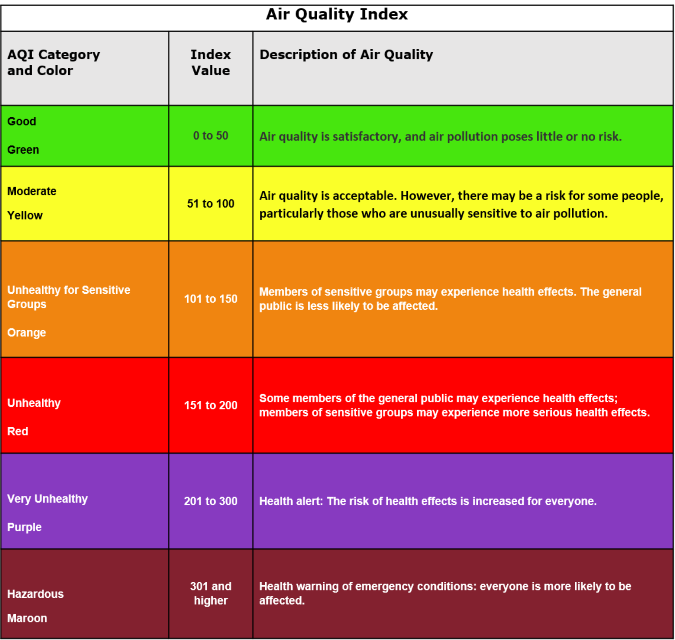
Indoor Air Quality
Indoor Air Quality (IAQ) refers to the air quality inside of and around buildings and structures, especially as it relates to the health and comfort of the people living/working there. Understanding common indoor pollutants and how to control them can help reduce your risk of indoor health concerns.
There are many sources of indoor pollutants including:
- Tobacco products
- Deteriorated asbestos-containing insulation
- Products for household cleaning and maintenance
- Excess moisture
- Radon
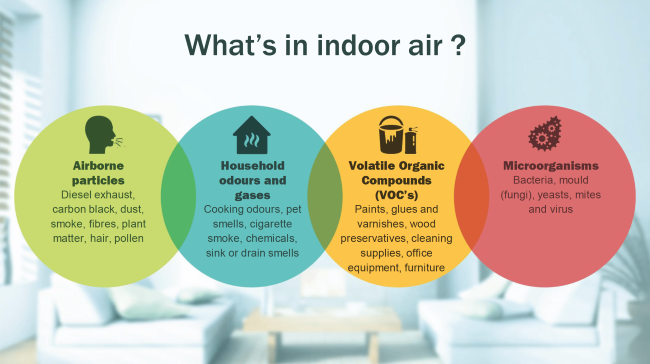
Health effects from indoor air pollutants may be noticed soon after exposure, or possibly years later. Immediate effects can include eye, nose and throat irritation, headaches, dizziness, and fatigue. These effects are usually short-term and treatable.
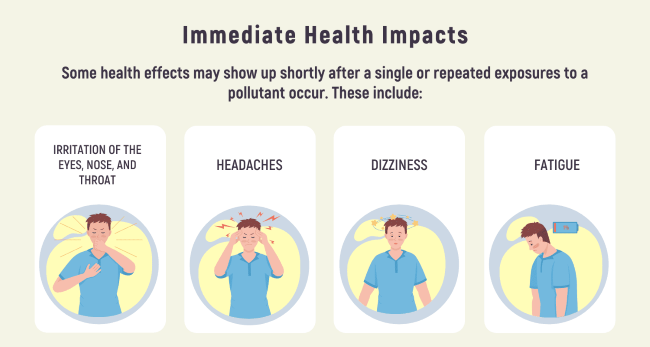
Other health effects may show up after long or repeated periods of exposure, or years after exposure has occurred. Long-term effects include some respiratory diseases, heart disease and cancer and can be severely debilitating or fatal.
The best way to improve IAQ is to reduce or remove the source(s) of the pollutants and to ventilate with clean outdoor air. If that is not possible, a good filtration system can be an effective supplement. Using portable air cleaners and upgrading your HVAC filters can reduce indoor air pollution but they do not remove all pollutants from the air.
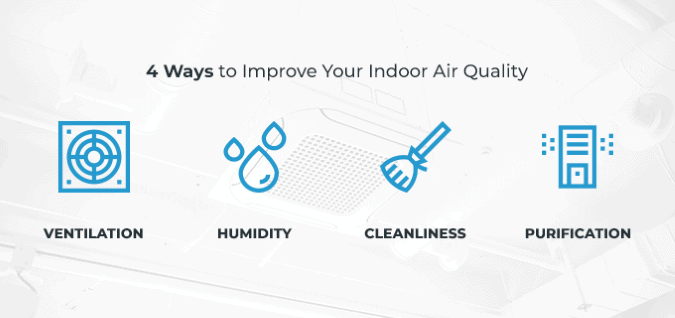
Nebraska Clean Indoor Air Act
The purpose of this act is to protect the public health and welfare, comfort, and environment by prohibiting smoking and the use of electronic smoking devices in enclosed indoor workspaces including restaurants, bars, keno establishments, other workplaces, and indoor public places.
You can file a complaint if you believe a person or business is in violation of the law by:
- Contact SWNPHD at 308-345-4223 or info@swhealth.ne.gov
- Complete the online form. Clean Indoor Air Act Complaint Form (ne.gov)
- Contact 1 (877) 633-7331 or dhhs.smokefree@nebraska.gov
